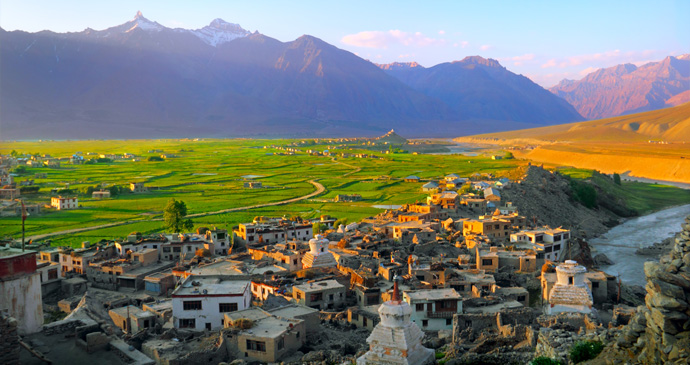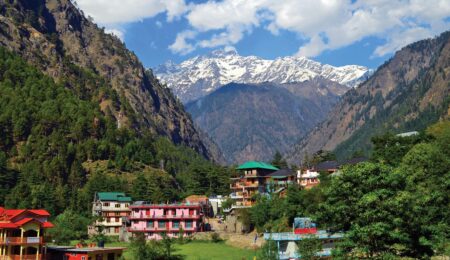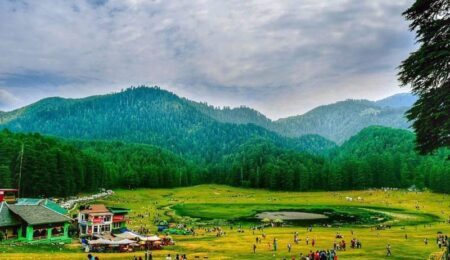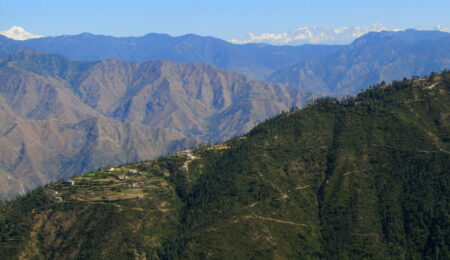
Nestled in the mighty Himalayas, the Zanskar region in Ladakh, India, is a rugged and remote land known for its dramatic landscapes and breathtaking mountain passes. The Zanskar Valley is surrounded by towering peaks, glaciers, and ancient monasteries, offering a unique blend of natural beauty and cultural heritage. This article will delve into the fascinating world of Zanskar’s mountain passes, exploring their significance, challenges, and the awe-inspiring experiences they offer to trekkers and adventure enthusiasts.
The Zanskar region is located in the eastern corner of the Indian state of Jammu and Kashmir. It is a high-altitude desert characterized by its barren terrain and extreme climatic conditions. The region is flanked by the Great Himalayan Range to the south and the Zanskar Range to the north. Within this rugged landscape lie some of the world’s most challenging and scenic mountain passes, which serve as lifelines for the local communities and attract trekkers from around the globe.
Mountain passes have been vital for the people of Zanskar since ancient times, connecting the isolated villages and serving as trade routes. These passes are the lifelines for the locals, providing access to basic amenities, such as food, fuel, and medical supplies. In winter, when the region remains cut off from the rest of the world due to heavy snowfall, these passes become frozen highways, allowing the locals to travel to neighboring regions.
In addition to their practical significance, the mountain passes of Zanskar also hold cultural and spiritual importance. Many ancient monasteries, such as the Phuktal Monastery and the Bardan Monastery, are located near these passes, serving as centers of Buddhist learning and meditation. The passes often feature prayer flags, chortens (Buddhist shrines), and mani walls (stone walls with inscriptions of Buddhist prayers), adding a spiritual aura to the treacherous terrains.
Prominent Mountain Passes in Zanskar:
- Shingo La Pass: Located at 5,090 meters, the Shingo La Pass is one of the most challenging and lesser-known passes in Zanskar. It connects the Zanskar Valley with the picturesque Lahaul Valley in Himachal Pradesh. The trek to Shingo La Pass offers panoramic views of snow-clad peaks, glaciers, and alpine meadows, making it a paradise for adventure enthusiasts and photographers.
- Singge La Pass: Situated at 5,050 meters, the Singge La Pass is another prominent pass in the Zanskar region. It connects the Suru Valley with the Zanskar Valley, offering breathtaking vistas of the surrounding mountains. The trek to Singge La Pass is known for its challenging terrain, high-altitude lakes, and encounters with rare wildlife, such as the Himalayan ibex and snow leopards.
- Sir La Pass: Located at an altitude of 4,850 meters, Sir La Pass is a relatively easier pass to cross than others in Zanskar. It connects the Darcha region of Himachal Pradesh with the Zanskar Valley. The trek to Sir La Pass takes trekkers through picturesque valleys, quaint villages, and mesmerizing alpine meadows, offering glimpses into the traditional Ladakhi lifestyle.
 Trekking across the mountain passes of Zanskar is not for the faint-hearted. The region’s high altitude, unpredictable weather, and challenging terrains pose several risks and require careful planning and preparation. Trekkers are advised to undertake these expeditions with experienced guides or trekking agencies to ensure safety and proper acclimatization.
Trekking across the mountain passes of Zanskar is not for the faint-hearted. The region’s high altitude, unpredictable weather, and challenging terrains pose several risks and require careful planning and preparation. Trekkers are advised to undertake these expeditions with experienced guides or trekking agencies to ensure safety and proper acclimatization.
Proper physical fitness and endurance are essential prerequisites for tackling the demanding treks. Trekkers should undergo a fitness regime and acclimatization process before embarking on these high-altitude adventures. Carrying essential trekking gear, including proper clothing, sturdy footwear, camping equipment, and ample food and water supplies, is crucial.
It is also recommended to keep a close eye on weather forecasts and avoid crossing the passes during inclement weather conditions or heavy snowfall. Trekkers should be prepared for altitude sickness and take necessary precautions, such as gradual ascent, staying hydrated, and carrying medications like Diamox (under medical supervision).
 While exploring the mountain passes of Zanskar, it is imperative to practice responsible and sustainable tourism. The fragile ecosystem of the region is highly susceptible to environmental degradation. Trekkers should adhere to the principles of “Leave No Trace,” ensuring no litter is left behind and respecting the local flora and fauna.
While exploring the mountain passes of Zanskar, it is imperative to practice responsible and sustainable tourism. The fragile ecosystem of the region is highly susceptible to environmental degradation. Trekkers should adhere to the principles of “Leave No Trace,” ensuring no litter is left behind and respecting the local flora and fauna.
Supporting the local communities by utilizing local services, such as guides, homestays, and locally sourced food, is an excellent way to contribute to the region’s sustainable development. It is important to respect the cultural sensitivities of the locals, seeking their guidance and permission when visiting sacred sites and monasteries.
The Zanskar region of Ladakh is a treasure trove for adventure seekers and nature lovers, with its awe-inspiring mountain passes and mesmerizing landscapes. The rugged terrains, ancient monasteries, and the indomitable spirit of the local communities make the Zanskar mountain passes an unparalleled destination for trekkers. Embarking on these challenging expeditions offers a physical adventure and an opportunity to witness the rich cultural heritage and awe-inspiring beauty of the Himalayas. So, gear up, prepare yourself, and experience the thrill of conquering the majestic Zanskar mountain passes.




